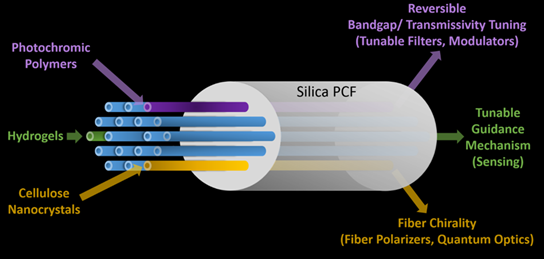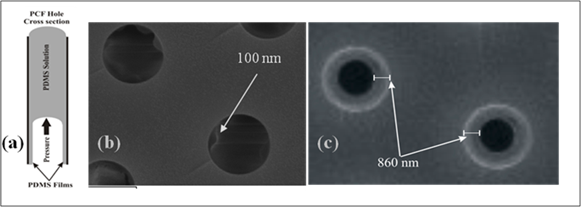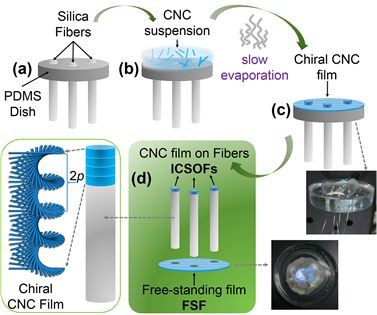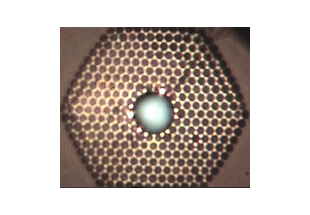Αναζήτηση
ΚΛΕΙΣΙΜΟΥβριδικές οπτικές ίνες φωτονικών κρυστάλλων
Δρ. Γεώργιος Κακαράντζας
Διατάξεις και αισθητήρες οπτικών ινών
- Κατασκευή και υβριδισμός φωτονικών μικροϊνών
- Υβριδικές οπτικές ίνες φωτονικών κρυστάλλων
- Οπτικές ίνες με μεταεπιφάνειες ή πλασμονικές νανοδομές
Over the past twenty years, a fiber with a fundamentally new design (proposed by Philip Russell in 1991) has been demonstrated: the photonic crystal fiber (PCF). This is made from a single material such as (undoped) fused silica. The fiber incorporates a periodic array of air holes lying along the fiber, an example of a 2-D photonic crystal. A missing hole leaves an extended solid region – a high-index “defect” – that acts as the fiber’s core. The surrounding material acts as the cladding. This core is index guiding (by total internal reflection) because the cladding with its holes has a lower effective refractive index (RI) than the core. PCFs with a low-index defect, an extra or enlarged hole have also been made. These can only guide light by photonic band gap effects – PBG guiding. A common feature of PCFs is that they are made from a single material e.g., silica. However, the existence of holes in the cladding enables the infiltration of materials and liquids such as liquid crystals, ferrofluids, metals, etc, creating a new category of fibers termed as hybrid PCF. Recent results from our group show successful infiltration of PCF with PDMS polymers. Hybrid PCFs represent a very hot research topic in physics and photonics. In our group we use fiber post-processing techniques for the development of hybrid silica-based optical fibers comprising different sol-gel, photochromic polymer, hydrogel and cellulose nanocrystals (CNC) materials and diverse microstructures with tunable properties as shown schematically below.

The development of specialty PCFs and related devices with tunable properties by post-processing existing fiber structures with the addition of “off the shelf” commercial materials and improved fiber geometries for applications all-fiber optical devices and sensors.
PDMS film formation inside the holes of PCF
In our lab, we have developed a method and demonstrated PDMS film formation inside the holes of PCFs. The method involved solutions of different concentrations of PDMS in toluene. The solution was then pushed inside the PCF holes with pressure as shown graphically below. Less dense (lower concentrations of PDMS in toluene) and faster moving solutions were used for thinner film formation and denser (with higher concentrations of PDMS in toluene) and slower moving solutions were used for thicker film formation as shown below.

Cellulose Nanocrystals (CNCs) in optical fibers
Cellulose nanocrystals (CNCs) have attracted great attention as new “wonder” materials for advanced applications. Owing to their unique property of spontaneous self-assembly to form helicoidal nanostructures by evaporation of aqueous suspensions, CNCs can form chiral (left-handed) nematic films with great interest for photonic applications. In our group, we have demonstrated the fabrication of silica optical fibers incorporating chiral cellulose nanocrystal (CNC) films. This is the first time that chiral CNCs have ever been integrated in optical fibers. The transmission properties of these CNC hybrid fibers (CNC-HFs) are polarization-dependent and act as all-fiber polarization filters and polarization transformers.

Key Publications
Διατάξεις και αισθητήρες οπτικών ινών
- Κατασκευή και υβριδισμός φωτονικών μικροϊνών
- Υβριδικές οπτικές ίνες φωτονικών κρυστάλλων
- Οπτικές ίνες με μεταεπιφάνειες ή πλασμονικές νανοδομές


